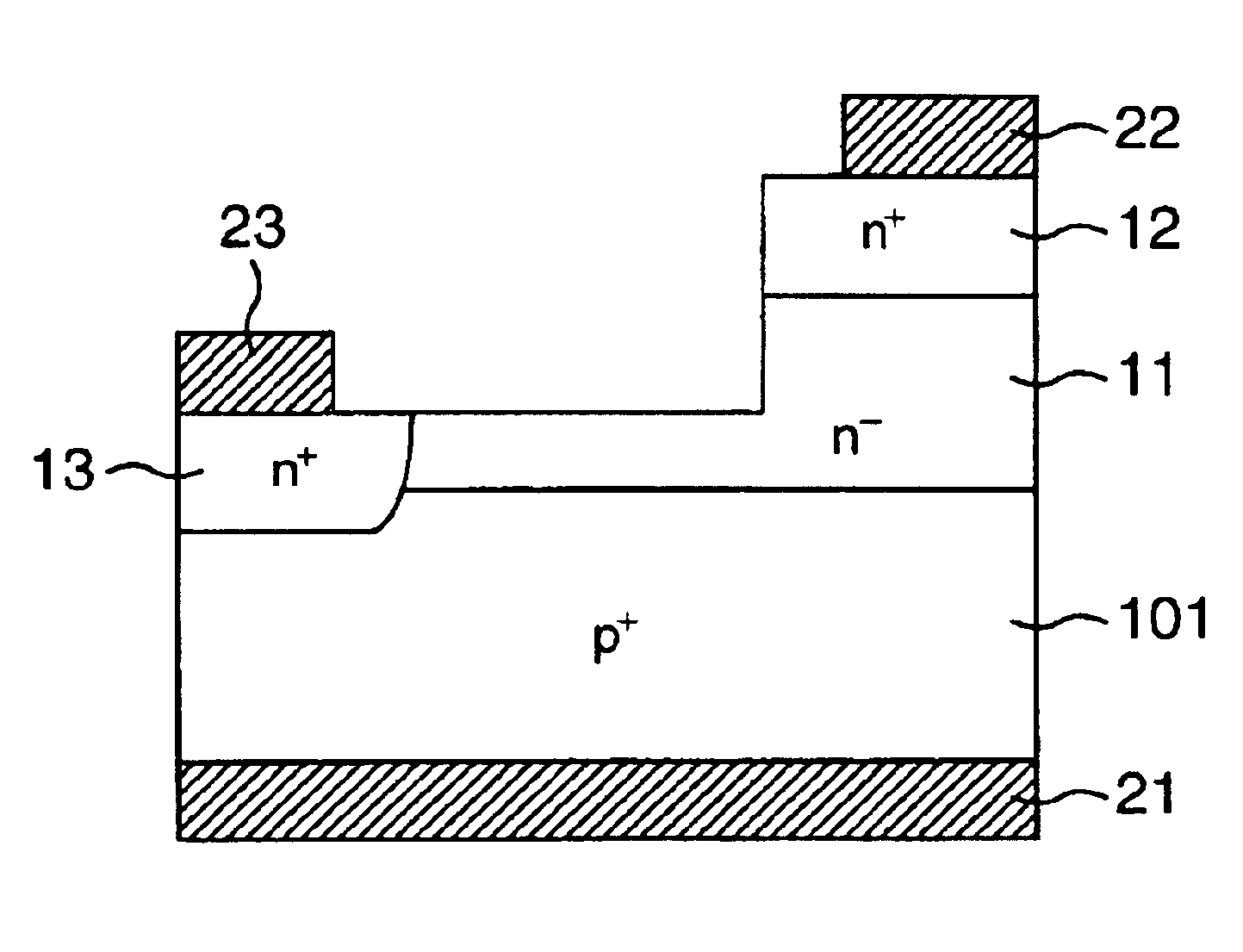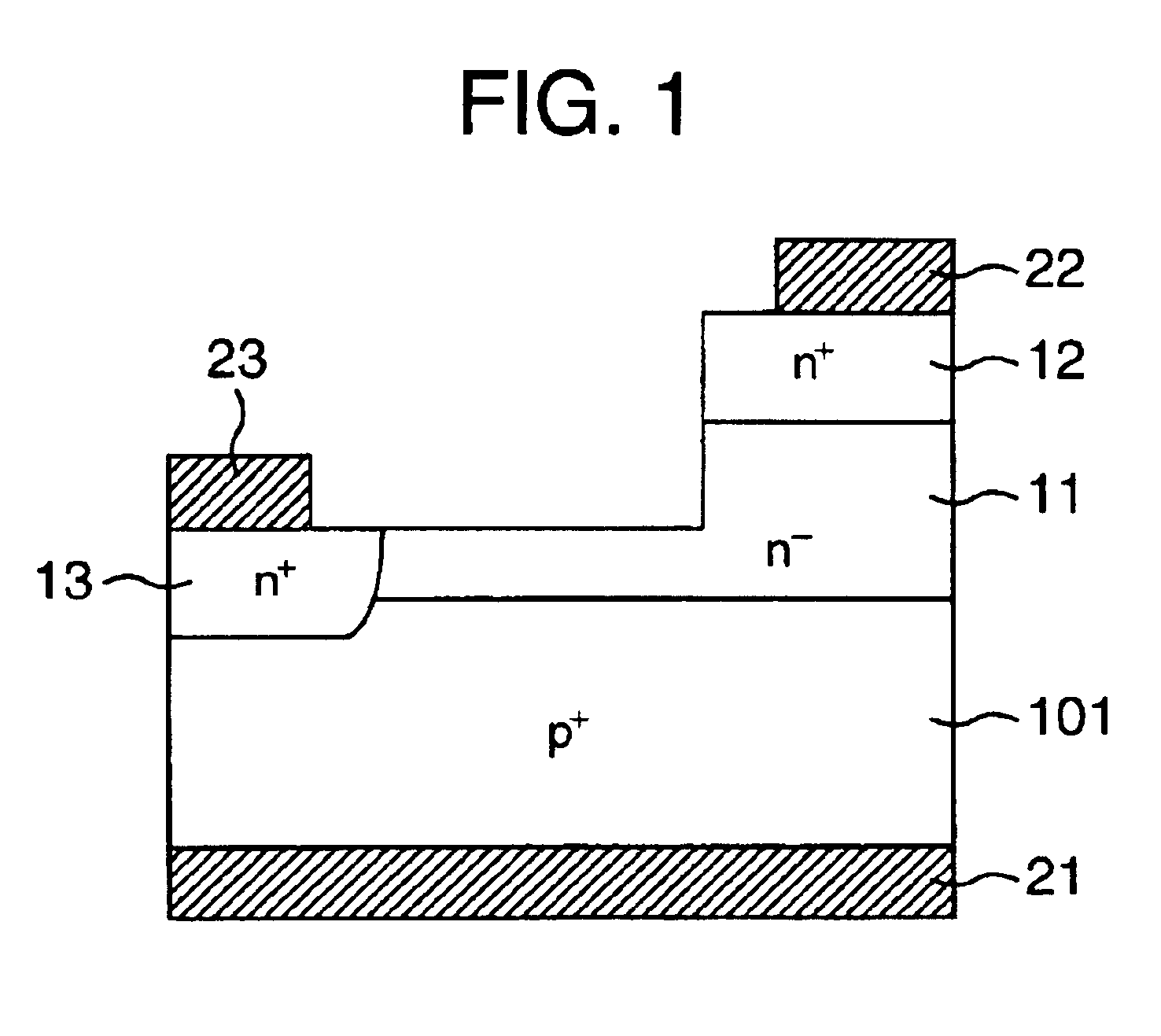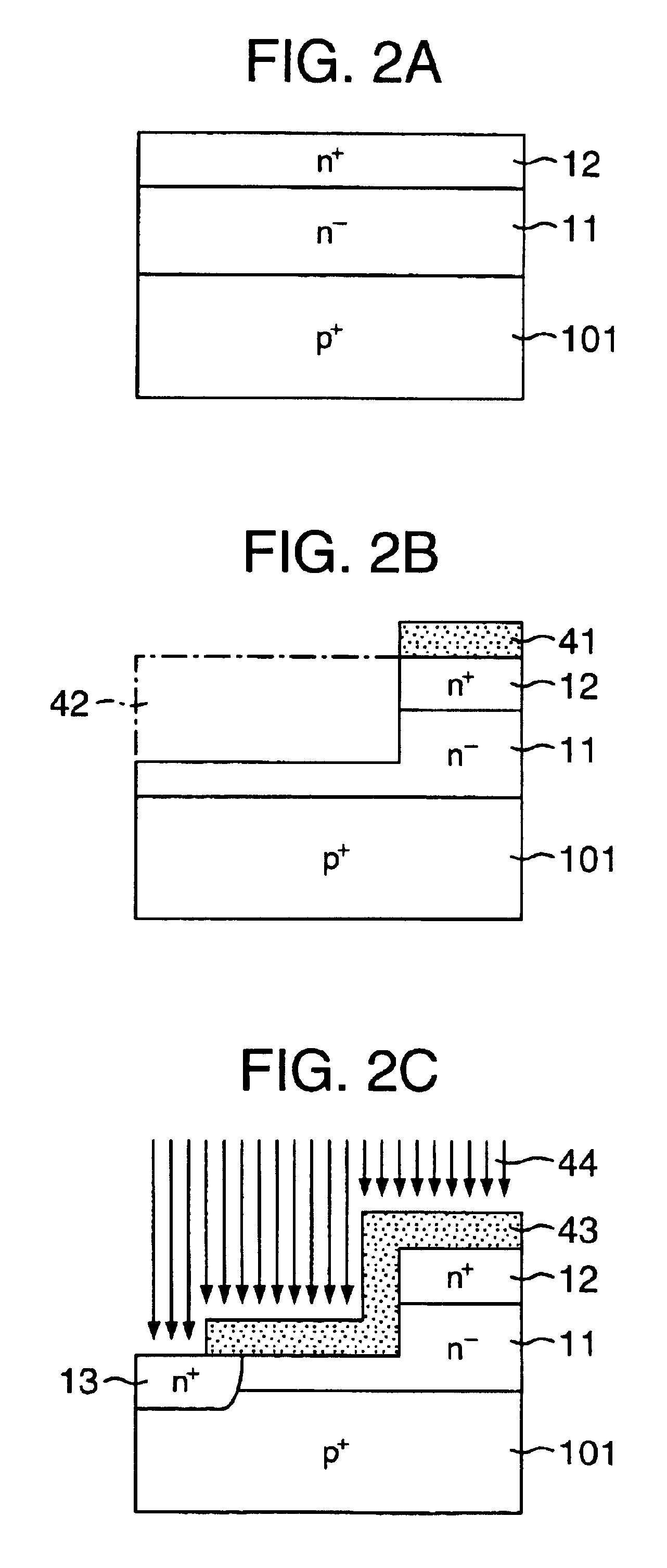Semiconductor device
a technology of semiconductor devices and on-resistance, which is applied in the direction of semiconductor devices, transistors, electrical devices, etc., can solve the problems of excessive increase in on-resistance, achieve the effect of preventing on-resistance from increasing, shortening the channel length, and increasing on-resistan
- Summary
- Abstract
- Description
- Claims
- Application Information
AI Technical Summary
Benefits of technology
Problems solved by technology
Method used
Image
Examples
first embodiment
[0027]The present invention will be described below more in detail using some embodiments. FIG. 1 is a diagram showing the present invention and shows the cross sectional structure of a lateral channel type SIT. Referring to the figure, the numeral 101 indicates a p+ semiconductor body that is the gate region, the numeral 11 indicates an n− drift region, the numeral 12 indicates an n+ drain region, and the numeral 13 indicates an n+ source region. The numeral 21 indicates a gate electrode 21, the numeral 22 indicates a drain electrode, and the numeral 23 indicates a source electrode. In this embodiment, p-type 4H-SiC semiconductor body is used as the p+ gate region semiconductor body 101. An n epitaxial layer, 1.0 μm in thickness and 2.0×1017 cm−3 in density, is used as the drift region 11.
[0028]FIGS. 2A-2C are diagrams showing the fabrication process of the structure in this embodiment. As shown in FIG. 2A, the high-density n+ drain region 12 is epitaxially grown on the n− drift re...
second embodiment
[0031]FIG. 3 is a diagram showing the present invention and shows the cross sectional structure of a lateral type SIT. In this embodiment, ion implantation is used to form an n+ drain region 12. Like reference numerals in FIG. 1 are used to indicate like structural parts. This structure differs from that in FIG. 1 in that an n+ drain region 12 is formed on an n− drift region 11 through ion implantation. The junction end of the drain region 12 is exposed on the second major surface of the substrate that is an n− drift region 11.
[0032]FIGS. 5A-5C are diagrams showing the fabrication process of the second embodiment. After the n− drift region 11, 0.7 μm in thickness and 2.0×1017 cm−3 in density, is epitaxially grown on a p+ semiconductor body that is a gate region 101, a pattern is formed on a masking material 41 of SiO2 by the photolithography technology as shown in FIG. 5A and then a region 42 corresponding to the channel and the source is removed. Next, as shown in FIG. 5B, an n− ch...
seventh embodiment
[0043]FIG. 9 is a diagram showing the present invention and shows the cross sectional structure of a lateral type SIT. FIG. 11 is a perspective view of the semiconductor shown in FIG. 9. Like reference numerals in FIG. 9 are used to indicate like structural parts. In this embodiment, the depth is the long side. The top structure of the channel, integrated with the source electrode 23, increases the blocking effect in the off state. Therefore, it is desirable that this structure be formed across the channel width (depth direction) as in this embodiment.
[0044]Like reference numerals in FIG. 6 are used to indicate like structural parts. This embodiment is similar to the fourth embodiment except that a source electrode 23 extends into the direction of the channel such that the source electrode covers an SiO2 film 30 on the top of the channel. FIGS. 10A-10F show the formation process of this structure. As shown in FIG. 10A, a region 42 corresponding to the channel and the source is remov...
PUM
 Login to View More
Login to View More Abstract
Description
Claims
Application Information
 Login to View More
Login to View More - R&D
- Intellectual Property
- Life Sciences
- Materials
- Tech Scout
- Unparalleled Data Quality
- Higher Quality Content
- 60% Fewer Hallucinations
Browse by: Latest US Patents, China's latest patents, Technical Efficacy Thesaurus, Application Domain, Technology Topic, Popular Technical Reports.
© 2025 PatSnap. All rights reserved.Legal|Privacy policy|Modern Slavery Act Transparency Statement|Sitemap|About US| Contact US: help@patsnap.com



